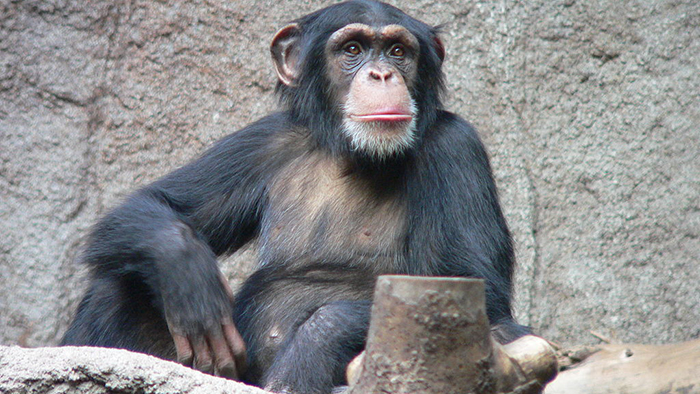
By using statistical methods to compare genomic data across species, such as chimpanzees and humans, the Przeworski Lab is gaining insights into the origins of genetic variation and adaptation. (Photo: Common chimpanzee at the Leipzig Zoo. Thomas Lersch, Wikimedia Commons.)
Launched approximately 100 years ago, population genetics is a subfield within evolutionary biology that seeks to explain how processes such as mutation, natural selection, and random genetic drift lead to genetic variation within and between species. Population genetics was originally born from the convergence of Mendelian genetics and biostatistics, but with the recent availability of genome sequencing data and high-performance computing technologies, it has bloomed into a mature computational science that is providing increasingly high-resolution models of the processes that drive evolution.
Molly Przeworski, a professor in the Columbia University Departments of Biological Sciences and Systems Biology, majored in mathematics at Princeton before beginning her PhD in evolutionary biology at the University of Chicago in the mid-1990s. While there, she realized that the availability of increasingly large data sets was changing population genetics, and has since been interested in using statistical approaches to investigate questions such as how genetic variation drives adaptation and why mutation rate and recombination rate differ among species. In the following interview, she describes how population genetics is itself evolving, as well as some of her laboratory’s contributions to the field.